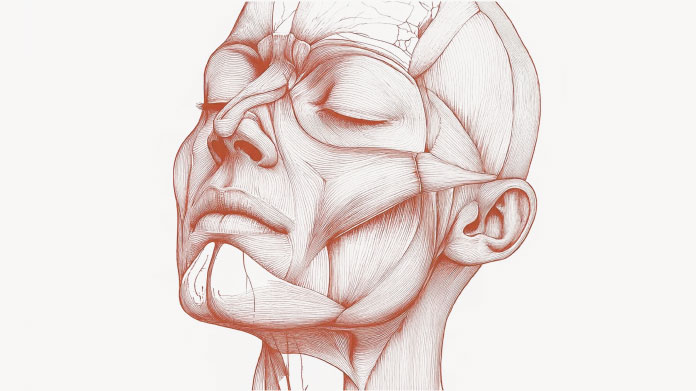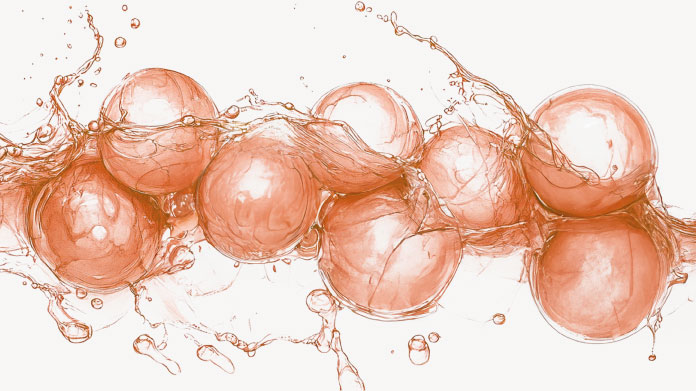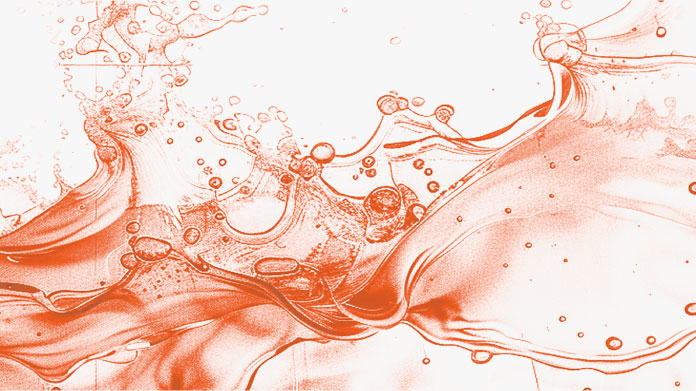
Phytotherapy and weight loss: how does it work?
From the Greek phyton (‘plant’) and therapeuin (‘to take care of’), phytotherapy literally describes the use of plants for treating (or preventing) disease. It’s the most ancient form of healthcare there is, the first written references dating back to around 3000 BC.
It initially amounted to the simple cataloguing of home and empiric remedies of local customs (herbal teas, infusions, powders, poultices …), but traditional phytotherapy gradually developed as a result of biochemical and pharmacological knowledge to grow into what we now recognise as ‘modern’ phytotherapy. Aiming to scientifically validate the medicinal usages of our ancestors, it also offers new methods of extracting active principles which extend the therapeutic field.
So how does phytotherapy fit into a weight loss programme? In combination with a balanced diet and regular exercise, plant extracts can support your efforts to lose weight by acting on interrelating parameters, from appetite control to metabolism of fats and modulation of energy expenditure. Here we take a closer look at the essential ingredients of a slimming pharmacopoeia.
Carob, the anti-snacking weapon
The fruit of the carob tree (Ceratonia siliqua L.), carob is a Mediterranean legume primarily grown in the Iberian peninsula.
A flat, dark brown pod, it contains a cocoa-flavoured pulp which promotes a feeling of satiety. It therefore indirectly helps with weight control by curbing cravings (1-2). This satiogenic effect is due to its galactomannans, a type of soluble fibre which delays emptying of the stomach.
While carob powder can be added to drinks and sweet dishes, extracts of carob standardised in galactomannans (such as CSAT®, a patented carob supplement standardised to 30% galactomannans) guarantee maximum efficacy.
Forskolin from Indian coleus, for metabolism of fats
Part of the Lamiaceae family, Indian Coleus (Coleus forskohlii) is a tropical plant from northern India, used for thousands of years in Ayurvedic medicine.
The plant’s roots are much sought-after because of their content of forskolin. Also called coloneol, this diterpene is involved in the process of thermogenesis (the production of body heat) and regulates endocrine function. This species of coleus thus supports effective fat metabolism and weight loss (3-4).
Identified in 1974, forskolin is today found in high-performing synergistic slimming supplements (such as the powerful Advanced Fat Burner, which along with forskolin, also contains green coffee, inulin, East Indian globe thistle and garcinia).
Chilli pepper, the essential weight loss spice
Could chilli peppers (Capsicum annuus) have a fat-burning effect while firing up our tastebuds?
Maybe. This small berry-fruit from the Solanaceae family definitely plays a role in weight control as a result of its capsaicinoids: these also activate thermogenesis while at the same time helping to modulate appetite (5-6).
A good way of boosting your metabolism without setting your mouth on fire, is to take a chilli extract supplement (for example MetadrineTM, a formulation which combines the patented compound Capsimax® with green tea, garcinia and cacao).
Knotted wrack, a revolutionary slimming seaweed
Knotted wrack (Ascophyllum nodosum) is a brown seaweed that grows along parts of northern Atlantic coast and fully deserves a place in any slimming programme.
Helping to promote weight loss and a healthy gut, it contains specific polyphenols which target alpha-amylase and lipase, two digestive enzymes responsible for breaking down sugars and fats (7).
The subject of extensive scientific study, both in animals and humans, this valuable marine species is a key ingredient in cutting-edge supplements targeted at weight control (such as Fat & Carb Blocker, a supplement containing eco-friendly Ascophyllum nodosum from France, obtained using simple water extraction).
Garcinia, for reducing storage of fat
Resembling a small yellow pumpkin, garcinia (Garcinia cambogia) or Malabar tamarind
It’s the fruit’s rind in particular, which supports weight management and fat metabolism, as a result of its high levels of hydroxycitric acid (HCA) - between 15% and 30% (8). Though there is more to discover about its properties, this compound is recognised as an inhibitor of ATP-citrate lyase, an enzyme involved in synthesising fatty acids, and in this respect, garcinia may help reduce adipose storage (9).
So to optimise your slimming efforts, consider supplementing with garcinia rind extract, making sure you choose a formulation with a high concentration of hydroxycitric acid (the supplement Garcinia Cambogia is standardised to 60% HCA, the highest percentage on the market).
Liquorice, for targeting that spare tyre
We all remember sucking on liquorice sticks on the way home from school. But did you know that behind this simple sweet, appreciated the world over, lies a root that’s symbolic of traditional Chinese medicine?
Containing multiple active substances such as glycyrrhizic acid, glabridin and liquiritoside, liquorice root (Glycyrrhiza glabra) has antioxidant properties and supports good gastrointestinal health, by, in particular, mediating liver enzyme pathways. This partly explains why it targets visceral fat (10-11).
As you’ve probably guessed, munching on sweets is hardly the best way to trim your waistline. A much better option is to take a liquorice extract supplement (such as the patented product Viscerox®, with 30% polyphenols and 3% glabridin for unbeatable efficacy).
Mukul myrrh, the little-known slimming aid
An unexpected resource from Ayurveda! Mukul myrrh, which has the Latin name Commiphora mukul, is a shrub that grows in Indian desert regions.
Its trunk oozes an oleoresin gum which supports weight loss, fat metabolism and cardiovascular health (12-13). Its versatility comes from its content of guggulsterones, plant sterols which act primarily at an enzyme, thyroid and adipocyte level (14).
So how about giving yourself the maximum chance of success by including it in your high-performing slimming programme (with, for example, the product Weight Loss Formula, enriched with Commiphora mukul and renowned plants such as green coffee, Dolichos Biflorus and konjac for a comprehensive action)?
References
- Zhu BJ, Zayed MZ, Zhu HX, Zhao J, Li SP. Functional polysaccharides of carob fruit: a review. Chin Med. 2019;14:40. Published 2019 Sep 30. doi:10.1186/s13020-019-0261-x
- Papakonstantinou E, Orfanakos N, Farajian P, Kapetanakou AE, Makariti IP, Grivokostopoulos N, Ha MA, Skandamis PN. Short-term effects of a low glycemic index carob-containing snack on energy intake, satiety, and glycemic response in normal-weight, healthy adults: Results from two randomized trials. 2017 Oct;42:12-19. doi: 10.1016/j.nut.2017.05.011. Epub 2017 May 31. PMID: 28870473.
- Loftus HL, Astell KJ, Mathai ML, Su XQ. Coleus forskohlii Extract Supplementation in Conjunction with a Hypocaloric Diet Reduces the Risk Factors of Metabolic Syndrome in Overweight and Obese Subjects: A Randomized Controlled Trial. Nutrients. 2015;7(11):9508-9522. Published 2015 Nov 17. doi:10.3390/nu7115483
- Henderson S, Magu B, Rasmussen C, Lancaster S, Kerksick C, Smith P, Melton C, Cowan P, Greenwood M, Earnest C, Almada A, Milnor P, Magrans T, Bowden R, Ounpraseuth S, Thomas A, Kreider RB. Effects of coleus forskohlii supplementation on body composition and hematological profiles in mildly overweight women. J Int Soc Sports Nutr. 2005 Dec 9;2(2):54-62. doi: 10.1186/1550-2783-2-2-54. PMID: 18500958; PMCID: PMC2129145.
- Rogers J, Urbina SL, Taylor LW, et al. Capsaicinoids supplementation decreases percent body fat and fat mass: adjustment using covariates in a post hoc analysis. BMC Obes. 2018;5:22. Published 2018 Aug 13. doi:10.1186/s40608-018-0197-1
- Zheng J, Zheng S, Feng Q, Zhang Q, Xiao X. Dietary capsaicin and its anti-obesity potency: from mechanism to clinical implications. Biosci Rep. 2017;37(3):BSR20170286. Published 2017 May 11. doi:10.1042/BSR20170286
- Wan-Loy C, Siew-Moi P. Marine Algae as a Potential Source for Anti-Obesity Agents. Mar Drugs. 2016;14(12):222. Published 2016 Dec 7. doi:10.3390/md14120222
- Chuah LO, Ho WY, Beh BK, Yeap SK. Updates on Antiobesity Effect of Garcinia Origin (-)-HCA. Evid Based Complement Alternat Med. 2013;2013:751658. doi:10.1155/2013/751658
- Fassina P, Scherer Adami F, Terezinha Zani V, Kasper Machado IC, Garavaglia J, Quevedo Grave MT, Ramos R, Morelo Dal Bosco S. The effect of garcinia cambogia as coadjuvant in the weight loss process. Nutr Hosp. 2015 Dec 1;32(6):2400-8. doi: 10.3305/nh.2015.32.6.9587. PMID: 26667686.
- Nakagawa K, Kishida H, Arai N, Nishiyama T, Mae T. Licorice flavonoids suppress abdominal fat accumulation and increase in blood glucose level in obese diabetic KK-A(y) mice. Biol Pharm Bull. 2004 Nov;27(11):1775-8. doi: 10.1248/bpb.27.1775. PMID: 15516721.
- Namazi N, Alizadeh M, Mirtaheri E, Farajnia S. The Effect of Dried Glycyrrhiza Glabra L. Extract on Obesity Management with Regard to PPAR-γ2 (Pro12Ala) Gene Polymorphism in Obese Subjects Following an Energy Restricted Diet. Adv Pharm Bull. 2017;7(2):221-228. doi:10.15171/apb.2017.027
- Ramesh B, Karuna R, Sreenivasa Reddy S, Sudhakara G, Saralakumari D. Ethanolic extract of Commiphora mukul gum resin attenuates streptozotocin-induced alterations in carbohydrate and lipid metabolism in rats. EXCLI J. 2013;12:556-568. Published 2013 Jun 19.
- Orabi SH, Al-Sabbagh ES, Khalifa HK, et al. Commiphora myrrha Resin Alcoholic Extract Ameliorates High Fat Diet Induced Obesity via Regulation of UCP1 and Adiponectin Proteins Expression in Rats. 2020;12(3):803. Published 2020 Mar 18. doi:10.3390/nu12030803
- Mithila MV, Khanum F. The appetite regulatory effect of guggulsterones in rats: a repertoire of plasma hormones and neurotransmitters. J Diet Suppl. 2014 Sep;11(3):262-71. doi: 10.3109/19390211.2014.937045. Epub 2014 Jul 15. PMID: 25025986.
5 Days
I am merely judging the delivery system
I am merely judging the delivery system, which was flawless. It wouldn't make any sense to comment on the efficacy of the supplements, since that is only possible on a statistical basis. Even if something doesn't improve, that doesn't have to mean that the supplement doesn't work, since one doesn't know how it might have worsened without the supplement and the opposite might also apply, since many symptoms are psychosomatic and the supplement might provide a placebo effect.
Roger De Backer
13 Days
Perfect!!!!!!!!!!!!!
Perfect!!!!!!!!!!!!!
Patrick
15 Days
Magnesium and Zinc Orotate are top…
Magnesium and Zinc Orotate are top supplements. Highly recommend!
Kristjan
26 Days
Clean, simple, effective
Nothing to complain. Delivers everything fast, attentive to their regular customers. Best experience.
FABIO I.
29 Days
Possibility to enjoy a variety of high…
Possibility to enjoy a variety of high quality suppléments. Fast delivery Good packaging Clear information and website
Vov Oo
31 Days
Efficient ordering and delivery
Efficient ordering and delivery. Happy with products. I order fairly regularly. Reliable
Gill Lee
31 Days
Happy customer.
Supersmart sell the best products and are effecient when it come to handling and dispatching orders. Also, their return and refund policies is very simple and easy for the customer. The creme on top is the return customer discounts. Keep up the good work.
ABDULQADER Jehad
35 Days
Prompt and reliable.
Prompt and reliable.
MIFSUD Joseph
41 Days
great? / OK
I don't use the word great; everything was OK; it is maybe too early to expect an effect of the supplements
STAEHLI C
48 Days
Well,It was yesterday I started using…
Well,It was yesterday I started using it but I can tell the supplement is working perfect,will definitely still give best comments once I'm done using it ...
ANTHONY Oluwaseun Ugwu
49 Days
Great products
Great products, fast delivery.
Nujood ALHADDAD
58 Days
Easy and quick
Easy and quick
Derya Iren
59 Days
Quick delivery
Quick delivery, big choice of supplements. Good quality.
Val
61 Days
Great vitamins at a great price
Great vitamins at a great price! I buy Bacillus subtilis which I really can’t find anywhere else which is great for intestinal health. 5 stars to Supersmart Vitamins.
Loli Vaughan
63 Days
Easy way to order
Easy way to order. Fast delivery. Transporter FedEx was very polite and called me 1 hour before delivery.
TAJC Katja



